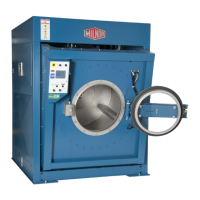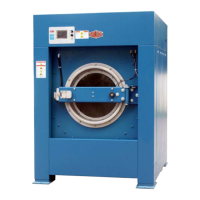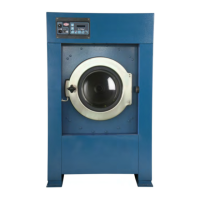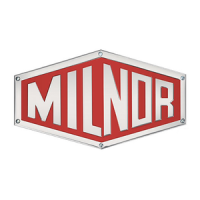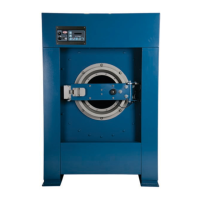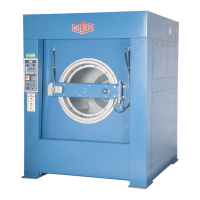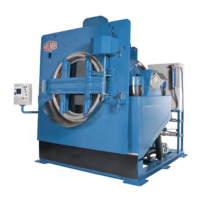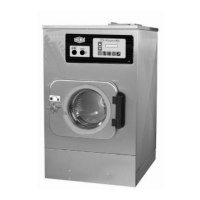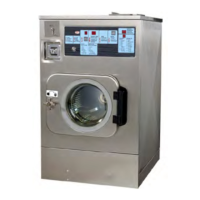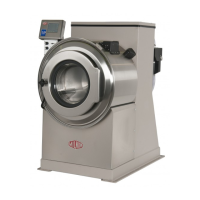20
Pellerin Milnor Corporation
CAUTION:
Bad lubricant — will decrease the life of components.
� Make sure that all equipment and fittings used to apply lubricants are
clean.
� Use only the given lubricants or equivalent lubricants that have the
same specifications.
Table 8. Lubricant Identification
Code
Type
Trademark Name
Application Example
EM
grease
Mobil Polyrex EM or as given on the
motor nameplate
motor bearings
EPLF2
grease
Shell Alvania EP (LF) Type 2 drive shaft bearings and bushings,
ball joints, chain drives
1030
oil Shell Rotella T 10W30 Hydro-cushion™ cylinders
3.1.4 Grease Gun Procedures
BNUUUH01.R05 0000335825 A.5 A.26 A.3 9/21/21 1:10 PM Released
CAUTION: Hydraulic pressure — can push out seals and push grease into unwanted
areas (example: motor windings).
� Use a hand grease gun. A power grease gun gives too much pressure.
� Know the quantity of grease your grease gun gives each cycle (each
stroke).
� Operate the grease gun slowly (10 to 12 seconds for one cycle).
� Add only the specified quantity. Stop if new grease come out of a drain port or other
opening.
� Remove spilled grease from belts and pulleys.
The tables give grease quantities in fluid ounces (fl oz) and milliliters (mL). You can also use
grease gun cycles (strokes). A cycle is each time that you pull the trigger. One cycle is usually ap-
proximately 0.06 fl oz (1.8 mL). Your grease gun can give more or less than this. Measure the
output of your grease gun as follows:
• Make sure that the grease gun operates correctly.
• Operate the grease gun to put grease into a small container with fluid ounce or milliliter incre-
ments. Pull the trigger fully and slowly.
• Add a sufficient quantity of grease to measure accurately. Count the number of cycles of the
grease gun (the number of times that you pull the trigger).
• Calculate the quantity for each cycle of the grease gun, as in the following examples.
Example: 2 fl oz / 64 cycles = 0.031 fl oz for each cycle
Example: 59 mL / 64 cycles = 0.92 mL for each cycle
Routine Maintenance
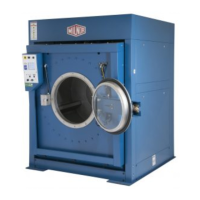
